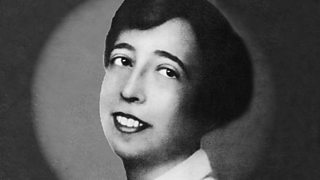How the Holocaust created a new field of science: the Science of Evil
Social psychology is the investigation of how our thoughts, feelings and behaviours are influenced by others. It was pioneered by five Jewish men who all lost family in the Holocaust and who were driven by the same fundamental question: how could it have happened? The murder of around two thirds of Europe’s Jewish population, as well as others, demanded an explanation. It wasn’t just Nazis – there were accomplices and millions of bystanders.
75 years on from the liberation of Auschwitz, Archive On Four takes a look at how attempts to understand racism, antisemitism and the horrors of Nazi ideology led to the creation of this new field of science – the Science of Evil.

Kurt Lewin
The man often described as the father of experimental social psychology was Kurt Lewin. When Hitler came to power, the Polish born Jew left his job at the University of Berlin, settling instead at the University of Iowa.
Lewin believed that people would thrive better under democratic rather than dictatorial leadership. He ran an experiment where two classes were set up for children to do crafts. One with an aloof, autocratic leader who barked instructions, and one with a teacher who allowed them to make decisions collectively and gave friendly encouragement.
In some aspects, the autocratic groups were more productive. But Lewin also claimed that the kids in the democratic group were less aggressive, more cooperative and more fulfilled.
The importance of his work was to focus on how individuals were influenced by others rather than how they were raised by their parents, as other psychologists had suggested. “His work set the topic of social psychology as the study of social influence,” says social psychologist Marilynn Brewer.

Do we have the media we need for an effective democracy?
Timothy Garton Ash examines the diversity of voices across the media landscape.
Solomon Asch
Solomon Asch, also born to a Polish-Jewish family, arrived in the United States in 1920. He was based at Swarthmore College, Pennsylvania, when he conducted the experiment for which he is best known: “the Asch conformity experiment.”
People will often go along with others, even when they don’t believe that others are right.
Imagine you are asked to take a seat in a room with six other participants. You are all told to look at a line on the left of a card, and decide which of the three lines on its right is equal to it in length.
For the first couple of cards, everyone agrees which line is the same. But then with the third card, something weird happens.
Everyone else appears to give the wrong answer. What do you do?
In fact, the other six people give the wrong answer because they are all stooges, set up to lie. Nonetheless, Asch found that two thirds of subjects were influenced by the decisions of these “actors” and would also give the wrong answer.
His work showed that people will often go along with others, even when they don’t believe that others are right.

The Auschwitz survivor who forgave the Nazi doctors who experimented on her
Eva Kor has dedicated her life to talking to those who hurt her during the Holocaust.
Serge Moscovici
Moscovici grew up in a Jewish orthodox household in Romania. He was forced to leave school because of antisemitic laws and in 1941 he witnessed the Bucharest pogrom, in which the fascist paramilitary massacred 135 Jews. After the war, in which he was a forced labourer, he went on to study psychology in France.
-
![]()
Ways you are being influenced without even realising it
The enigmatic social science that's controlling you right now.
Whereas Asch was interested in the power of the majority over individuals, Moscovici was interested in the reverse.
History had shown that an individual or a small group was capable of changing the mind of majorities: the suffragette or slave abolition movement both began small but gradually won people over.
-
![]()
Archive on 4: The Science of Evil
Attempts to understand how the Holocaust occurred led to the creation of a new science - social psychology.
In Moscovici’s experiment, subjects were asked whether a slide was green or blue. Two actors in a group of six gave what was clearly the wrong answer – green.
Under a brutal dictatorship, a minority might still influence a majority – in subtle, difficult to detect ways.
Moscovici found that the majority, as Asch had predicted, weren’t influenced.
He then did a follow up experiment where he showed the subjects blue, green and also ambiguous, turquoise slides.
Those who had seen the earlier stooges declare the blue slides to be green, tended to classify more of the ambiguous slides as green. They might have ignored the actors in the first experiment, but they were nonetheless still influenced by them.
Moscovici showed that under a brutal dictatorship, a minority might still influence a majority – in subtle, difficult to detect ways.
Henri Tajfel
Moscovici’s friend Henri Tajfel was from a Jewish family in Poland. His parents, brother and much of his extended family all died in the Holocaust. Wanting to understand the loss of his loved ones drove his work.
The mere act of categorising people into groups leads them to discriminate. Since society means we are bound to group ourselves (by race, gender or the football team we support), rather than it being the tendency of a dangerous few, discrimination might actually be the norm.
His most famed experiment was “the minimal group experiment.” Boys from a local school were asked to judge slides of paintings by Wassily Kandinsky and Paul Klee. They were then told they were either in the Kandinsky or Klee group, based on which paintings they liked. But this was a ruse. They were actually randomly split into the two groups.
At the end, each boy got a sum of money to distribute to all those who had taken part. The astonishing finding was that despite the groups being random, the boys usually gave more money to the members of their own group.
Tajfel had shown that the mere act of categorising people into groups leads them to discriminate. Since society means we are bound to group ourselves (by race, gender or the football team we support), rather than it being the tendency of a dangerous few, discrimination might actually be the norm.

Stanley Milgram
Stanley Milgram was raised in a working-class Jewish family in Brooklyn, New York. His father was a baker who, like his mother, had been born in eastern Europe. They still had family in Europe who were missing: the shadow of WWII loomed large across his childhood.
Milgram’s experiments started in the 1960s when The Cold War was at its height and fears about communism took many forms.
-
![]()
Archive on 4: The Science of Evil
Attempts to understand how the Holocaust occurred led to the creation of a new science - social psychology.
There was public anxiety about mind control, prompted by the capture and supposed brainwashing of American soldiers by the Chinese during the Korean war. At the same time there was the trial of Adolph Eichmann in Israel. A high-ranking Nazi, Eichmann argued that in arranging the mass deportation of Jews to their deaths, he had merely been following orders.
Milgram became curious. He asked, “What is there in human nature that allows an individual to act without any restraints whatsoever, so that he can act inhumanely, harshly, severely, and in no ways limited by feelings of compassion or conscience?” Would people really do horrendous things just because they were told to?

The obedience experiments:
Stanley Milgram’s most controversial experiments are known as “the obedience experiments.” Each volunteer arrived with another participant. They were told by the lab-coat-wearing experimenter that they would draw lots to see who was to be a “learner” and who the “teacher”. But it was all a set-up. The genuine volunteer was given the role of teacher and the other man, an actor, would take the role of learner. The learner’s arms were then strapped down and connected to a machine – an electrode generator.
What is there in human nature that allows an individual to act without any restraints whatsoever, so that he can act inhumanely, harshly, severely, and in no ways limited by feelings of compassion or conscience? Would people really do horrendous things just because they were told to?
The teacher was told to read out words that the learner had to memorise and repeat.
If the learner made a mistake, the teacher had to pull a lever to administer what he was told was an electric shock. And with each mistake he was instructed to deliver ever-increasing levels of shock – right up to 450 volts.
The learner would yelp with pain but if the teacher protested the experimenter would simply urge him to continue.
How much suffering were subjects willing to inflict?
According to Milgram, 65% of subjects were willing to go all the way. In a report to his funders he wrote, “I once wondered whether in all of the United States, a vicious government could find enough moral imbeciles to meet the personnel requirements of a national system of death camps, of the sort that were maintained in Germany. I am now beginning to think that the full complement could be recruited in New Haven.”
In fact, more recent examination shows that only in one variation of the experiment did 65% of subjects deliver the ultimate shock. Milgram argued that most people will surrender to a higher authority and inflict pain on another person but, in fact, the majority of subjects in Milgram’s experiments defied the experimenter. And not everyone was fooled. The people who didn’t believe the shocks were real were the ones most likely to administer them.
However, the fact remains that many were capable of pulling that last lever.

The influence of the Holocaust on social psychology
Not all the early influential social psychologists were Jewish, but a vastly disproportionate number were. They established the parameters of social psychology, defining the phenomena to be investigated. They authored the classic studies of conformity and compliance that still fill the textbooks. And they were the giants on whose shoulders current researchers stand.
Lewin, Asch, Tajfel, Moscovici and Milgram were all shaped by the Holocaust, and they in turn shaped the science of evil. “Their own identities were tied up in understanding what had happened there,” says Marilynn Brewer. By understanding it they hoped to have the tools to prevent it ever happening again.
Sadly, the Holocaust was not the last horror of human history. Since World War II, events in many countries attest to the fact that understanding the psychological mechanisms of hatred is not the same as eliminating them.
But at a time of populism, increasing political polarisation and hostility to immigrants and refugees, social psychology is as relevant as ever.
To hear more about how the attempts to understand how the Holocaust occurred led to the creation of a new science, listen to Archive on 4: The Science of Evil.

More from Radio 4
-
![]()
Archive on 4: The Science of Evil
Attempts to understand how the Holocaust occurred led to the creation of a new science - social psychology.
-
![]()
The Reunion: Auschwitz Survivors
Sue MacGregor brings together four people who survived the Nazi concentration camp, Auschwitz.
-
![]()
The Remarkable Resistance of Lilo
Charting the lives of a respected middle class German couple whose half-Jewish identity left them perilously vulnerable in Nazi Germany.
-
![]()
Lost Children of the Holocaust
Alex Last traces the fate of 12 children named in a series of postwar BBC radio appeals.




